THE HILLTOP CITY OF LAON – MEDIEVAL CAPITAL OF FRANCE
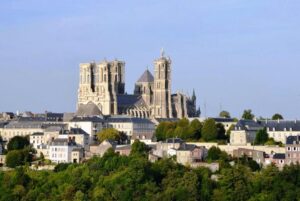
Situated high above the flat plain of northern Picardy, is the medieval city of Laon, known as the ‘Montagne Couronnée’ (the Crowned City). It sits isolated atop a 100m high limestone rock, surrounded by the low, flat plains below. The high town, encircled by 8 kms of walls and formidable gates, is France’s largest protected historic centre. The town’s crowning glory is the early 12th century Cathédrale Notre-Dame de Laon, visible for kilometres in every direction. It’s one of the earliest and greatest Gothic monuments in France.
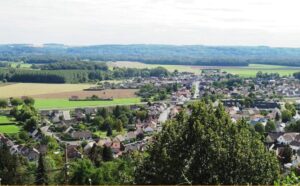
Its geographic features mean that the district of Laon has always held strategic importance. Archaeological evidence suggests it was first settled around 3000 BCE, although little is known about this period, up until the 1st century BCE when the Romans occupied the area. By the time of Julius Caesar, there was a Gallic village named Bibrax where the Remis (the inhabitants of the country around Reims) did battle with the confederated tribes of the Belgae. Wherever the precise location of this battlefield was, in due course the Romans fortified Laudunum (Laon) in order to check the successive invasions of the Franks, Burgundians, Vandals and Huns.
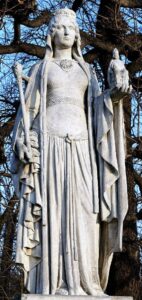
At the end of the 5th century, Archbishop Remigius of Reims—who baptised Clovis—instituted a bishopric in the town. From then on, Laon was one of the principal towns of the kingdom of the Franks, and it remained an important religious and intellectual centre until the Renaissance. Already a fortified town, the ramparts were constructed during the Carolingian period. Bertrada of Laon (also known as Bertha Broadfoot) was the mother of Charlemagne, king of the Franks, and this gave the city a special status. The Frankish state expanded to become the Carolingian Empire, and Laon became the principal city of the Carolingian kings, beginning with Louis IV.
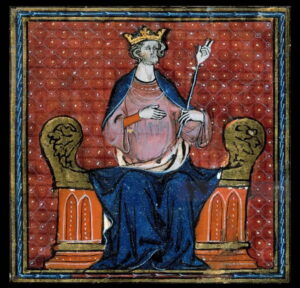
After the fall of the Carolingians, Laon took the part of the Carolingian heir, Charles of Lorraine. However, Hugh Capet, the Frankish ruler, managed to secure power with the connivance of the bishop, who, in return for this service, was made second ecclesiastical peer of the kingdom. Henceforth, there were constant disputes and revolts in the region between the local people and the clergy.
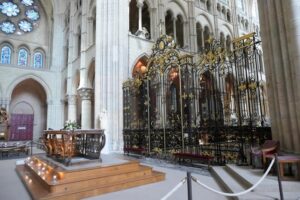
Early in the 12th century, the communes of France set about emancipating themselves from the oppression of the Church. During one such revolt the episcopal palace was burnt and the bishop and several of his partisans were put to death in April 1112. The fire spread to the cathedral and reduced it to ashes. The rioters went into hiding outside the town, which was pillaged by the local people, eager to avenge the death of their bishop. Thereafter, French monarchs intervened as needed to settle disputes between the bishop and the townspeople until 1331, when the commune was abolished.
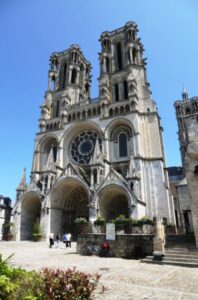
Despite its turbulent history, by medieval times Laon had grown and expanded due to a roaring trade in wheat and wine. This golden age saw an economic boom resulting in an intense activity of building and reconstruction. This included the stunning Gothic cathedral, with its imposing towers that was built to replace the one that had been burnt to the ground, along with 39 churches, 16 chapels, and the Royal Palace.
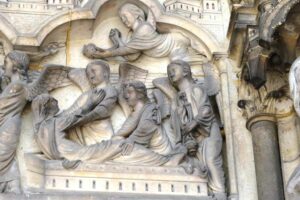
In the late stages of the Hundred Years’ War, Laon was captured by the Duke of Burgundy, who relinquished control of it to his English allies, who burnt much of the city to the ground. Many of the destroyed buildings were rebuilt in the Renaissance style. Laon also suffered greatly with the plague, killing a third of the population, followed by the extreme poverty of the Wars of Religion. Laon passed back and forth between the warring factions, such as the Catholic League, who used the town as a base. It was finally taken by the former Huguenot, Henri IV in August 1594.
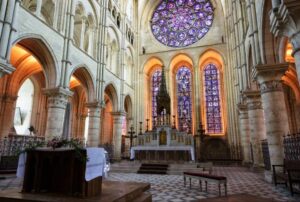
At the time of the Revolution, Laon permanently lost its rank as a bishopric. During his 1814 campaign, Napoleon tried in vain to dislodge the Prussian commanders, Blücher and Bülow, from the town in the Battle of Laon. In 1870, during the Franco-Prussian War, an engineer blew up the powder magazine of the citadel at the very moment when the German troops were entering the town. Many people died, and the cathedral and the old episcopal palace were damaged. Laon surrendered to German forces on 09 September 1870.
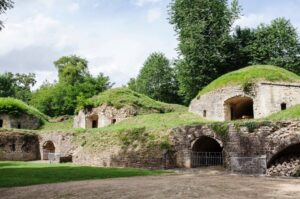
During the 19th century Laon undertook a period of modernisation. In the autumn of 1914 German forces captured the town and held it until the Allied offensive in the summer of 1918. From Laon visitors can also visit one of the most important battlefield sites, the Chemin des Dames, which runs east to west between Laon and Soissons, and being a plateau, was of considerable strategic importance. The road’s somewhat unusual name dates from the 18th century, when it was the route taken by the two daughters of Louis XV, Adélaïde and Victoire, who were known as the Ladies of France, when they would travel from Paris to the Château de Boves, occupied by a great friend of theirs from the royal court. Today, there are numerous war memorials and cemeteries, German, French and British, all long the Chemin.
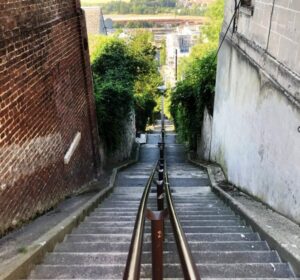
On arriving at Laon, the first thing you see is the historic, medieval city atop its 100m high rock, and the massive cathedral with its imposing towers. It’s quite a climb from the flat plain, up a long, winding road to the top. Easier by far is to take the local bus from the railway station. Making regular stops while circling the town, the ride provides an opportunity to see the city’s sights that might be too far to access on foot. The bus finally drops you right in front of the cathedral.
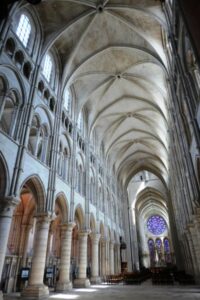
The Cathedrale de Notre-Dame de Laon was constructed around 1160. It has been listed as a Monument Historique since 1840 and is one of the finest examples of Gothic cathedrals in France, and unusually, has 5 towers. The architecture of the chapter house and cloister are particularly special, and the two towers by the entrance are ornately decorated with stone sculptures.
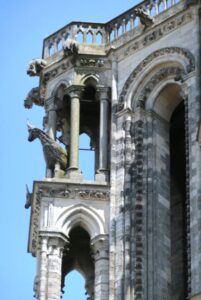
Take particular note of the statues of oxen that decorate the top of the façade as a tribute to the animals that provided so much labour during the cathedral’s construction.
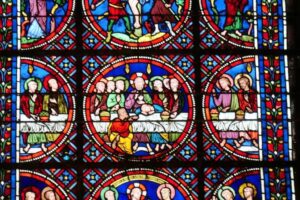
The interior has magnificent, brightly coloured stained glass windows that are a masterpiece of design, and together with the white stone of the interior, gives the cathedral a unique luminous quality.
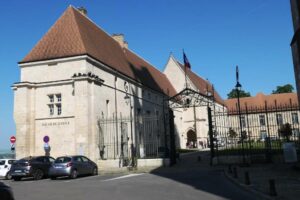
The old Episcopal Palace, adjacent to the Cathedral, is now the Palais de Justice, and the 12th century Hotel-Dieu nearby is one of the oldest alms hospitals in France, with a Gothic-style underground Great Hall and a lower room called ‘the Passants’ which have been carefully preserved. There’s also the Maison des Chanoines, where the deans of the cathedral lived.
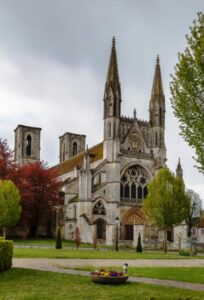
St Martin’s Abbey was badly damaged by fire during World War II, but it has been restored and has a very pretty cloister garden in what is now the city library’s courtyard. The city’s Museum has collections of sculpture and paintings, and includes a section dedicated to pre-history, Gallo-Roman jewellery, Greek vases, Merovingian and medieval artefacts, and 18th century earthenware. In the garden there is the Chapelle des Templiers, dedicated to the Knights Templar, and now called The Temple to St John of Jerusalem.
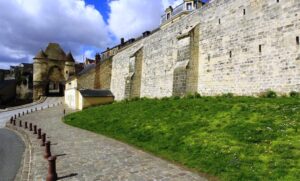
The 13th century ramparts are still largely intact, being punctuated at intervals by impressive gateways such as the Porte des Chenizelles, Porte des Soissons and the Porte d’Ardon, which is flanked by pepper pot-shaped lookout turrets. You can visit Batterie Morlot, also known as Fort Morlot, where an optical telegraph was built to communicate with 6 other forts that were invisible to the enemy approaching from below.
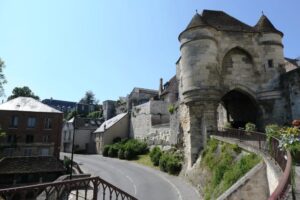
There is also an original drawbridge and part of the walk around the walls leads along a tree-lined pathway that offers a beautiful view across the town and countryside. In the distance is the Fôret de Saint-Gobain, a 6,000 hectare forest of oak, beech, birch and poplar trees which stretches across a ridge scarred with quarries and several ponds.
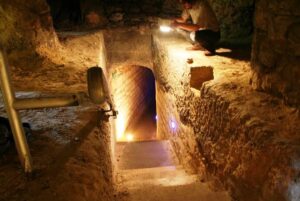
With Laon being built upon limestone quarries, there are underground passageways which are worth a visit. These served as a prison in the Middle Ages and later were used as part of the town’s defence system. The citadel was used as a military headquarters and hospital for German troops during WWI. Beneath the citadel, which is now the administrative heart of the city, there are kilometres of passageways constructed on three different levels, and a guided tour takes you down into the bowels of the city.
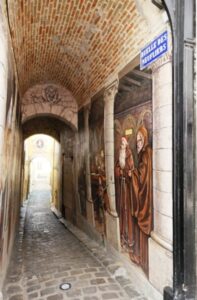
Visitors can take a guided tour or follow the heritage walks to learn about the history of Laon, and there are also some beautiful walks through a wooded area known as cuve St Vincent that offers several different paths, including one called the panorama staircase that comes up to the Porte de Chenizelles. Ask about these from the city’s Tourist Office, which is next door to the cathedral.
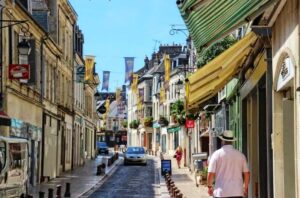
As well as some wonderful historic sites, Laon also offers some great traditional shopping experiences with patisseries, boulangeries, fromageries and charcuteries, as well as fashion boutiques, perfumeries, and interesting homewares shops. Enjoy a meal in one of the numerous cafes or bistros, and try a slice of gateau battu, a moist and airy brioche-like cake, accompanied by a locally brewed cider, and finish it off with a dash of eau de vie, a clear fruit cognac or a glass of champagne from the Aisne region nearby.
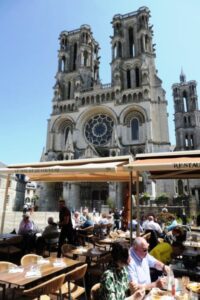
Laon is a very rewarding destination for an easy day trip from Paris. Direct trains leave from Paris Gare du Nord and the journey takes around one hr. 40 mins. Alternatively, drive north-east from Paris, which will take around 1hr 30 mins.
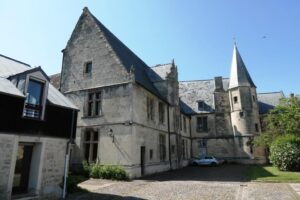
The last word on Laon shall go to Victor Hugo:…”This morning I came away from Laon, an ancient cathedral city within a city, an immense cathedral which should have six towers* but has only four**; four rather Byzantine towers with ornamental apertures like 16th century spires. Laon is full of beauty, its churches, its houses, its surroundings, everything.”
* The cathedral was meant to have seven towers
** There are in fact five towers
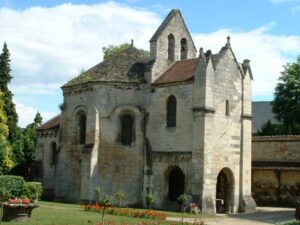
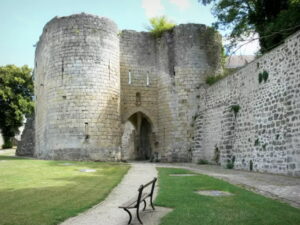


Leave a Reply